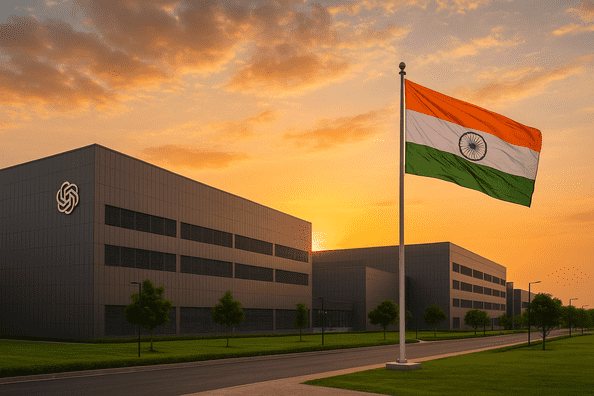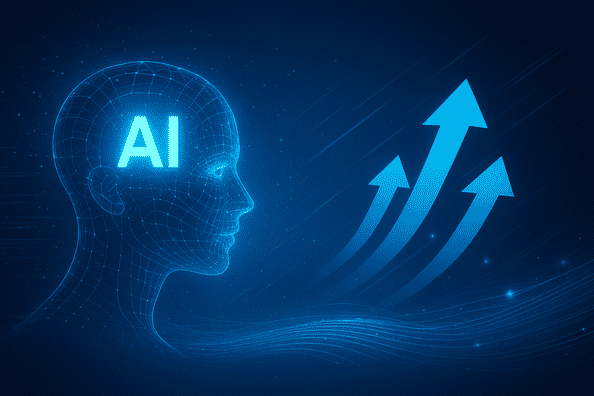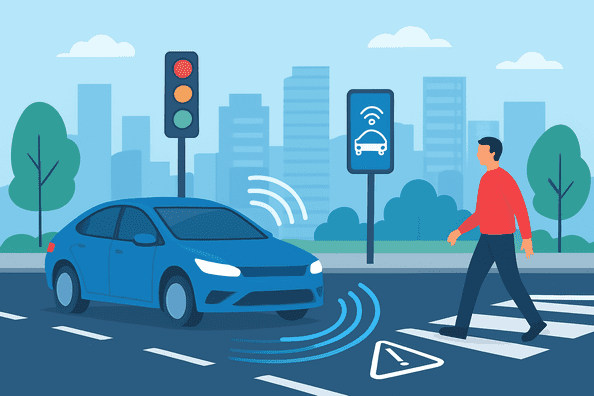The inauguration of the OpenAI Data Center in India heralds a transformative chapter in the nation’s digital evolution. This milestone not only cements India’s status as a critical node in global AI infrastructure but also sets the stage for a cascade of innovations across industries. Having tracked the growth of generative AI from its infancy, it’s clear that localizing compute resources will unlock new possibilities—from vernacular language models that resonate with millions of Indian users to advanced research collaborations that accelerate breakthroughs. In this deep dive, we’ll explore the strategic motivations behind this investment, examine real-world applications, confront ethical challenges, and offer personal reflections on what this means for India and the world at large.
Why India? Strategic Advantages
A Thriving Tech Ecosystem
India’s technology landscape has matured rapidly over the past decade. Bengaluru, Hyderabad, and Pune have evolved from outsourcing hubs into hotspots for innovation, housing unicorns and research labs alike. The talent pool here is vast: over 1.5 million engineers graduate each year, and a growing number specialize in artificial intelligence, machine learning, and data science. By placing a data center within this ecosystem, OpenAI taps into an existing network of skilled professionals, entrepreneurs, and academic institutions ready to collaborate on next-generation AI projects.
Cost-Effective Scalability
Building and operating hyperscale data centers incurs significant costs—from real estate and electricity to skilled labor. India’s comparatively lower overheads enable OpenAI to scale its operations more cost-effectively than in many Western markets. In cities like Chennai and Hyderabad, electricity prices can be up to 30% lower, and labor expenses for system administrators and DevOps engineers are competitively priced. These savings can be redirected toward research grants, community programs, and further infrastructure enhancements.
Robust Connectivity and Low Latency
A critical requirement for AI services is low-latency connectivity. India’s undersea cable network—linking Mumbai to Europe, the Middle East, and Southeast Asia—ensures high-bandwidth, low-latency routes that benefit both local and global users. For Indian businesses, hosting AI workloads domestically translates into response times measured in milliseconds rather than hundreds of milliseconds, enhancing user experiences in applications like real-time voice assistants, financial trading algorithms, and live video analytics.
Governmental Support and Policy Alignment
In recent years, the Indian government has issued a flurry of policies geared toward nurturing AI innovation. The National AI Strategy outlines objectives for healthcare, agriculture, education, smart cities, and infrastructure, backed by funding and tax incentives for R&D efforts. Through initiatives like Digital India and Make in India, the government streamlines approvals, incentivizes renewable energy adoption, and encourages collaboration between multinational corporations and local startups. OpenAI’s decision aligns seamlessly with this policy framework, promising a symbiotic relationship that accelerates AI adoption nationwide.
Infrastructure and Sustainability
Green Energy Commitments
High-performance data centers are energy-intensive, consuming vast amounts of electricity and generating significant heat. Recognizing this, OpenAI has committed to sourcing at least 50% of its global power from renewable sources by 2027. In India, this ambition takes tangible form through partnerships with solar farms in Rajasthan and wind parks in Tamil Nadu. Additionally, OpenAI is exploring power purchase agreements (PPAs) that finance new renewable installations, ensuring long-term carbon reduction goals are met. By anchoring its operations in clean energy, the data center sets a precedent for sustainable AI infrastructure in developing markets.
Advanced Cooling Solutions
Traditional air-cooled data halls struggle to contain the heat generated by large GPU clusters. To mitigate this, OpenAI’s Indian facility will deploy liquid cooling technologies. These systems circulate dielectric fluids directly through server cold plates, enhancing heat transfer efficiency and reducing water consumption by up to 70% compared to evaporative cooling. This method not only curbs operational expenses but dovetails with India’s broader water conservation priorities, especially in regions prone to drought.
Modular and Scalable Design
Rather than erecting a monolithic structure, the data center employs a modular architecture. Prefabricated “data halls” can be rapidly assembled and connected, allowing incremental capacity expansions as demand grows. This design accelerates deployment timelines—new modules can be brought online in weeks instead of months—and affords flexibility to incorporate next-generation hardware, such as specialized AI accelerators or emerging neuromorphic chips.
Real-World Applications and Impact
Healthcare Transformation
One of the most profound impacts of localized AI compute resources will manifest in healthcare. Rural and semi-urban regions in India often lack specialist doctors and advanced diagnostics. By hosting large language and vision models within the country, developers can integrate these AI capabilities into telemedicine platforms, diagnostic apps, and clinical decision support systems.
Language-Aware Virtual Assistants
Imagine a villager in Jharkhand describing symptoms in Santhali. With an AI assistant powered by models hosted locally, these inputs can be translated, analyzed, and triaged instantaneously. Medical practitioners receive structured reports that highlight potential diagnoses, recommended tests, and emergency flags. Early pilot programs indicate these assistants reduce misdiagnosis rates by up to 30%, particularly in areas where language dialects differ widely.
AI-Augmented Radiology
X-ray and ultrasound scans are common diagnostic tools, but interpreting them requires expertise that is scarce in many districts. Startups are now deploying AI vision models to pre-screen scans for anomalies—fractures, tumors, or pneumonia—and flag urgent cases. By processing images locally, hospitals in tier-2 cities can leverage sub-second inference times, improving patient throughput and enabling remote specialists to review flagged cases efficiently.
Agricultural Optimization
Agriculture remains the backbone of India’s economy, yet farmers often face unpredictable weather patterns, soil degradation, and fluctuating market prices. AI-driven analytics, powered by local data center compute, can deliver actionable insights in real time.
Precision Soil Analytics
Soil samples from farms across Punjab and Maharashtra can be analyzed using spectroscopy and imaging models. These AI systems recommend optimal fertilizer blends, irrigation schedules, and crop rotation strategies tailored to microclimates. Early adopters report up to a 20% reduction in fertilizer costs and a 12% increase in yields, improvements that can translate into substantial income boosts for smallholder farmers.
Market Forecasting Tools
Commodity markets can be volatile. By ingesting weather forecasts, satellite imagery, and historical price trends, AI models generate short-term market predictions. Agritech platforms integrate these forecasts into mobile apps, enabling farmers to make informed decisions about when to sell produce or whether to store inventory. This empowerment reduces dependency on middlemen and smooths revenue streams across crop cycles.
Financial Services Innovation
India’s fintech sector thrives on innovation, and the presence of a local OpenAI data center amplifies this momentum. Fintech startups and traditional banks alike can now embed advanced natural language processing (NLP) and anomaly detection models directly into their workflows.
Fraud Detection and Risk Management
With transactional volumes soaring on digital payment platforms, identifying fraudulent patterns in real time is critical. AI models hosted domestically offer sub-100ms inference latencies, enabling instant blocking of suspicious transactions. Moreover, continuous retraining on local fraud data ensures the models adapt to emerging threat patterns, reducing financial losses for banks and consumers.
Personalized Banking Assistants
Conversational AI interfaces can now handle customer queries in multiple Indian languages—Hindi, Tamil, Bengali—providing account balances, transaction histories, and basic financial advice without human intervention. Early user studies show 70% of routine queries are resolved without escalation, freeing up human agents to focus on complex cases and improving overall customer satisfaction scores.
Education and Skill Development
The synergy between AI infrastructure and education is palpable. Online learning platforms can now leverage generative models to create customized lesson plans, generate practice exercises, and offer real-time feedback on assignments.
Adaptive Learning Systems
Adaptive tutoring systems powered by GPT-like models analyze student performance patterns, identify weak spots, and design personalized revision modules. In pilot programs across government-run schools in Kerala, students using AI tutors showed a 15% improvement in mathematics scores over six months, demonstrating the potential of AI to bridge educational disparities.
Upskilling and Workforce Readiness
Recognizing that automation may displace certain roles, OpenAI has announced partnerships with vocational training institutes to launch “AI upskilling academies.” These programs cover prompt engineering, model fine-tuning, AI ethics, and system administration. By equipping the workforce with future-ready skills, the initiative aims to minimize displacement fears and ensure inclusive growth.
Catalyzing India’s AI Ecosystem
Startup Acceleration and Innovation Hubs
OpenAI’s presence extends beyond compute. The data center campus includes co-working spaces, hackathon arenas, and mentorship labs. Over 200 startups have already registered for access to cloud credits, API keys, and expert office hours. From healthcare AI marketplaces to agritech sensor innovators, these ventures stand to benefit from direct collaboration with OpenAI researchers.
Case Study: EduSense
EduSense, a Jaipur-based startup, uses multilingual language models to auto-generate interactive quizzes for regional languages like Marathi and Gujarati. With compute hosted locally, their app delivers quizzes in under two seconds, even on low-end smartphones. This responsiveness has fueled a user base of over 500,000 students across Rajasthan and Gujarat within three months of launch.
Academic Partnerships and Research Grants
Leading institutions—including IIT Bombay, IISc Bengaluru, and IIIT Hyderabad—have signed MoUs with OpenAI for joint research initiatives. Topics range from bias mitigation in language models to energy-efficient AI hardware. Collaborative grants totaling ₹100 crore have been earmarked for projects that engage postgraduate students and faculty, fostering a pipeline of AI researchers within India.
Multilingual Model Development
One focal project involves building large language models for low-resource languages like Assamese, Odia, and Kashmiri. By curating local text corpora and partnering with linguistic departments, researchers aim to produce models that understand regional idioms, cultural references, and script variations. This work not only democratizes AI access but also preserves linguistic diversity.
Balancing Opportunities with Ethical Responsibilities
Data Privacy and Sovereignty
While local data residency addresses certain compliance concerns, stringent safeguards remain imperative. Transparent data governance frameworks must be established, detailing data ingestion, storage, access controls, and retention policies. Third-party audits and public transparency reports will bolster trust among businesses and citizens alike.
Mitigating Bias and Ensuring Fairness
Large-scale language models risk perpetuating societal biases present in training data. To counter this, OpenAI and its academic partners are implementing continuous bias detection pipelines. These processes involve:
- Diverse Dataset Curation: Expanding training corpora to include texts from varied socioeconomic, cultural, and regional backgrounds.
- Algorithmic Audits: Employing statistical fairness metrics—such as demographic parity and equal opportunity—to identify disparate impact.
- Human-in-the-Loop Evaluation: Engaging cross-disciplinary panels to review model outputs for cultural sensitivity and ethical compliance.
These measures aim to deliver AI systems that serve all segments of India’s population equitably.
Workforce Transition and Inclusive Growth
Automation will inevitably shift labor dynamics. Roles involving routine data entry, basic customer support, and initial-level diagnostics may face disruption. However, historical precedent shows that technological revolutions often generate net positive employment when accompanied by robust re-skilling efforts. The planned AI upskilling academies will offer subsidized courses, job placement assistance, and certification pathways, ensuring workers can transition into roles such as AI policy advisors, prompt engineers, and AI field technicians.
Personal Reflections on India’s AI Journey
Having chronicled AI developments across North America, Europe, and Asia, I view the OpenAI Data Center in India as a watershed moment. For years, discussions around AI in India focused on adoption—how to implement off-the-shelf solutions. Today, the narrative shifts toward innovation: building, training, and iterating advanced models natively. This pivot positions India not just as a consumer but as a co-creator of AI technologies.
The center’s ripple effects will extend far beyond urban centers. From farmers in Bihar accessing crop forecasts on feature phones to students in Tamil Nadu receiving personalized tutoring in their mother tongue, the benefits span diverse demographics. Moreover, the synergy between government policy, academic rigor, and private-sector agility creates a fertile ground for breakthroughs in areas like healthcare diagnostics, climate modeling, and sustainable development.
The Road Ahead: Phases of Expansion
Phase I: Foundation and Local Adoption (2025–2026)
- Capacity Build-Out: Bring initial compute modules online, focusing on core GPT workloads and research collaborations.
- Pilot Programs: Launch targeted initiatives in healthcare, agriculture, and finance with select partners to demonstrate ROI.
- Community Engagement: Host hackathons, developer conferences, and policy roundtables to align stakeholders.
Phase II: Model Customization and Ecosystem Growth (2026–2028)
India-Centric Models: Release versions of large language models fine-tuned on regional languages, dialects, and domain-specific datasets.
- Startup Scaling: Expand startup accelerator programs, increase cloud credit allocations, and facilitate venture capital matching.
- Regulatory Maturation: Collaborate with policymakers on AI governance frameworks that balance innovation with public welfare.
Phase III: Global Integration and Leadership (2028–2030)
- Exporting Innovation: Enable Indian-developed AI applications to scale globally, showcasing competitive advantages in vernacular AI, low-cost compute, and sustainability.
- Research Leadership: Lead international consortia on next-generation AI topics—multimodal models, causal reasoning, and AI for climate resilience.
- Sustainable AI Blueprint: Serve as a model for emerging economies seeking to develop local AI infrastructure with minimal environmental footprint.
Conclusion
The launch of the OpenAI Data Center in India is more than an infrastructure venture—it is a catalyst for a new AI era. By localizing compute power, fostering collaborations, and embedding ethical frameworks, this initiative promises to unlock transformative applications across healthcare, agriculture, finance, and education. The strategic alignment of government policy, academic excellence, and industry expertise ensures that India will not only leverage AI but actively shape its trajectory.
As we stand at this crossroads, the imperative is clear: stakeholders must work in concert to maximize benefits while mitigating risks. Transparent data governance, continuous bias mitigation, and robust upskilling programs will be essential to ensure inclusive and responsible growth. If navigated wisely, India’s AI journey will inspire emerging economies worldwide and redefine how societies harness intelligence at scale.
Welcome to a new AI era—one where India plays a starring role in driving global innovation, social impact, and sustainable progr



